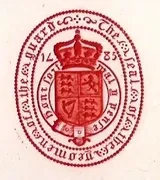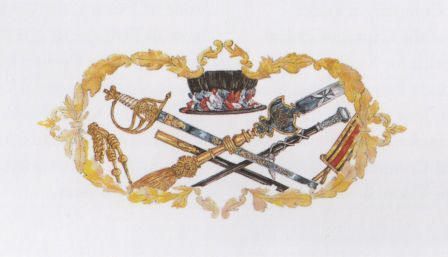The Officers
The hierarchy of The King's Body Guard of the Yeomen of the Guard is one of time-honoured tradition and rigorous standards.
Directly subordinate to the Captain of the Body Guard
Captain (List) is the Lieutenant, holding the esteemed position of the second most senior officer. Historically, this rank was reserved for those who had attained the status of Colonel or Lieutenant-Colonel in the army, marines, or the Indian army. Presently, candidates must have served in the Army or Marines and achieved at least the rank of Major. Following the abolition of the sale and purchase of commissions in 1857, the value of the Lieutenant's commission stood at £8,000. The office dates back to 29 October 1669, with the Hon Thomas Howard, second son of the Earl of Suffolk, as the inaugural Lieutenant.
Lieutenant (List)
Subordinate of Lieutenant in rank is the Clerk of the Cheque and Adjutant. Prior to 1 August 1927, the Ensign held this position directly beneath the Lieutenant. However, His Majesty King George V decreed that the rank of Clerk of the Cheque, bearing greater authority, would supersede that of the Ensign. As the Corps’ oldest paid officer, the Clerk of the Cheque's role is ancient and prestigious, predating the Body Guard itself. This officer maintained the checkroll or “checker-roll,” listing the names of household servants. An old dictionary defines the role as "an officer who has the check and controlment of the Yeomen of the Guard and all the Ushers belonging to the Royal family." Although not a paymaster, the Clerk of the Cheque functions as the Adjutant and secretary of the Guard, residing within the Palace, maintaining the Order Book, attending all parades, and preparing quarterly statements. Clerk of the Cheque and Adjutant (List)
Subordinate of Clerk of the Cheque and Adjutant is the Ensign, a position added by Charles II.
NB. Prior to 1928 Ensign was indeed senior to Clerk of the Cheque, until Brig-Gen J Cecil Wray CB CMG CVO, Royal Horse Artillery, was appointed to Clerk of the Cheque and technically outranked by Maj Colin William MacRae CBE, Royal Highlanders the Ensign. In 1929 the Roll shows that the seniority of these position was reversed and has remained so since....spooky!
Historian Thom notes that despite the establishment of the role in 1668, there is scant evidence of the Corps ever possessing a Banner or Standard. Records from St James's Palace indicate that a Standard existed, but it may have perished in the great fire of 21 January 1809. According to Chamberlayne's 'Anglice Notitia' for 1672, the Standard featured "a Cross of St George and likewise four bends," though the colors remain unspecified. Current regulations stipulate that the Ensign must have held a commission as a lieutenant-colonel or major in the army or marines. Ensign (List)
The Exon holds the most junior rank. First mentioned in the ceremony of All Nights during Charles II's reign, the title "Exon" likely derives from the French word "exempt," referring to an officer in the French Garde Du Corps. In England, the Exon was a commissioned officer in the Horse Guards, synonymous with "Corporal." Historically, the Exon was in charge of the Night Watch, ensuring the safety and order of the Guard. While the term "Exempt" is used in the Guard's orders, it always signifies a position of considerable responsibility. Exon (List)

